Unless you have been living in a cave, you have probably heard that on April 6, 2016, the Department of Labor (“DOL”) announced that investment professionals that provide investment services to IRA’s and other employer-sponsored retirement plans will be subject to fiduciary duties. This event has been described as the coming of the apocalypse by the brokerage industry, or about time by investment advisers because these folks have always been subject to fiduciary duties.
Suitability vs Fiduciary
Prior to the effectiveness of the DOL’s action, investment professionals that provide advice to IRAs are not subject to ERISA’s prohibited transaction rules. This means that broker-dealers and their registered representatives are subject to a suitability standard under FINRA rules. Suitability essentially requires that the investment professional have a reasonable basis to believe that a recommended investment strategy is suitable for a client based on information available to the investment professional through reasonable diligence. A fiduciary standard generally requires that the investment professional put the client’s interests first, act with utmost good faith, provide full and fair disclosure of material facts, avoid misleading clients, and disclose conflicts of interest.
Conflicted Advice
The DOL claims that investment firms not subject to a fiduciary standard steer IRA clients into investment products that have higher fees and lower returns. The DOL alleges that these conflicts of interest cost $17 billion a year, and result in a 100 basis point lower annual average return. The DOL claims that $1.7 trillion of IRA assets are invested in products that provide payments to investment professionals that generate conflicts of interest. What the DOL is focused on are traditional securities brokerage commissions, revenue sharing with plan administrators, front-end loads, 12b-1 fees and other payments to brokerage firms for IRA asset management.
Best Interest Contract Exception
In response to the very loud complaints and political influence from the brokerage industry, the DOL adopted a special exception for fees to broker-dealers. Under the Best Interest Contract Exemption or BICE, brokers can advise IRAs and receive revenue sharing, 12b-1 fees, brokerage commissions and even sell proprietary products managed by the broker, if the broker-dealer commits to putting client’s interests first, adopts certain anti-conflict of interest policies and procedures, and discloses conflicts that could affect the broker’s judgment as a fiduciary.
IRA Beneficiaries Can Bring Claims; Effectiveness
Finally, the new DOL rules permit IRA and other retirement plan beneficiaries to bring private causes of action or claims against investment professionals that violate the new rules.
Because these rules will require significant and expensive changes in the documentation and compliance policies of many large broker-dealers and their registered representatives, there is a long period of time before the rules take effect. The new fiduciary standard is scheduled to take effect in approximately one year, and the BICE provisions will go into effect in January 2018. But stay tuned, the brokerage industry is still complaining, and Congress has threatened to act against the rules. Certain players in the brokerage industry have also threatened to try to block the new rules in court.
Why the Big Fuss?
What is the big fight really about? As usual for big policy debates, it is about money, lots and lots of money. With the baby boomer generation retiring there is a lot of retirement money to be managed in IRAs. According to the Investment Company Institute’s 2015 Fact Book, as of the end of 2014, employer-sponsored retirement plan assets in the United States were approximately $24.7 trillion. Of that sum, $14.2 trillion consisted of defined contribution and IRA assets, with the remainder in defined benefit plans. Over the past fifteen years, the total assets in retirement plans have increased significantly, and the share of assets in defined contribution and IRAs has continued to grow as defined benefit plans continue to shrink. IRA assets have grown from $4.7 trillion to $7.4 trillion in the past seven years, with mutual funds by far the largest asset class of IRA assets. For the next 14 years, approximately 10,000 baby boomers will turn 65 every day. There is a lot of money to be made on investment management of those assets and therefore a lot of stakeholders are fighting about these new rules. To be continued….
* Jonathan Levy is a securities lawyer at Lindquist & Vennum LLP, and is a member of the Board of Directors of the Minnesota CFA Society.






Overall I think the rule is long overdue. There are too many instances of tax deferred products with high fees placed in accounts that already have the benefit of tax deferral. The BICE rules are also troublesome – the idea of sharing fees that lack transparency to the investor have never seemed in the best interest of investors. It seems unique to the industry. I’ve never hired a plumber who fixed my leaking toilet by getting a kickback from pipe manufacturers.
I worry about a slippery slope, however. It could start with fees, then spread more and more to performance. The risk of 20/20 hindsight with regard to performance of managed mutual funds and whether they will be treated fairly in competition with indexed based products, and for that matter, whether all index products can be treated fairly when smaller can’t compete on fees with larger established funds. Will we see Vanguard and Barclays become the de facto managers of retirement assets because their scale shuts out competition? As fiduciaries, do we care so long as their fees are the lowest? Do they eventually become utilities, or worse, is it the first step (aka a single payer health care system) whereby retirement fund management becomes a function of government where options are limited, choice and competition are restricted. Perhaps then the Social Security system will become open to investing in something other than fiscal deficits. Be careful what you wish for Mr. President. But I digress…